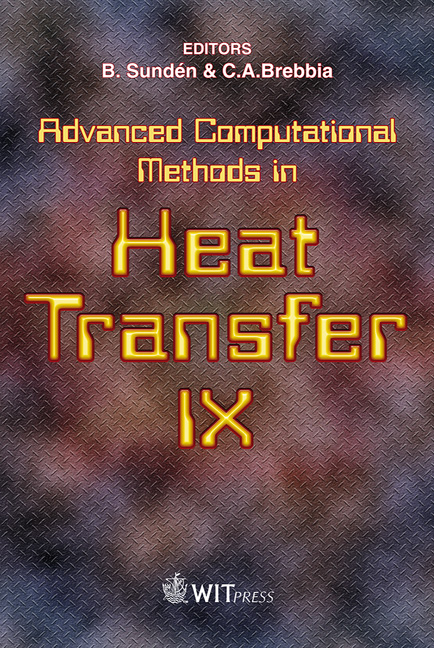An Analytical Solution To The Graetz Problem With Viscous Dissipation For Non-Newtonian Fluids
Price
Free (open access)
Transaction
Volume
53
Pages
10
Published
2006
Size
562 kb
Paper DOI
10.2495/HT060031
Copyright
WIT Press
Author(s)
R. Chiba, M. Izumi & Y. Sugano
Abstract
Forced convection heat transfer in a non-Newtonian fluid flow between parallel plates subjected to convective cooling on the external surfaces is investigated analytically. Fully developed laminar velocity distributions obtained by a power law fluid rheology model are used, and viscous dissipation is taken into account. The effect of heat conduction in the direction of fluid flow is considered negligible. The physical properties are assumed to be constant. We approximate the smooth change in the velocity distribution between the plates as a piecewise constant velocity. The theoretical analysis of the heat transfer is performed using an integral transform technique—Vodicka’s method. An important feature of the approach is that an arbitrary distribution of the temperatures of the surrounding media in the direction of fluid flow and an arbitrary velocity distribution of the fluid can be permitted. A comparison with the existing results provides a verification of this technique. The effects of the Brinkman number, Biot number and rheological properties on the distributions of the fluid temperature and the local Nusselt number are illustrated. Moreover, the effects of these parameters on the length of the freeze-free zone are discussed in the case where the temperatures of the surrounding media are below the solidification temperature of the fluid. Keywords: heat transfer, forced convection, non-Newtonian fluid, analytical solution, viscous dissipation, Graetz problem, channel flow.
Keywords
heat transfer, forced convection, non-Newtonian fluid, analytical solution, viscous dissipation, Graetz problem, channel flow.





